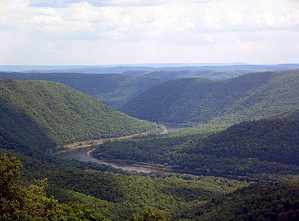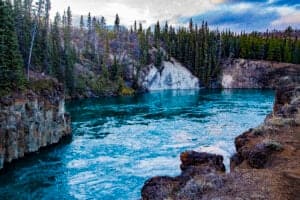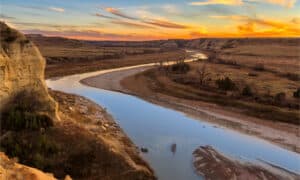The Columbia River is the largest river from the North American continent that runs into the Pacific Ocean. In the United States, only the Mississippi, St. Lawrence, and Mackenzie Rivers release more water than the Columbia River.
This river starts in the Rocky Mountain Trench of southeast British Columbia at a height of about 2,660 feet, close to Columbia Lake. Today we’re going to discuss everything there is to know about the history, size, geology, and activities available throughout the Columbia River.
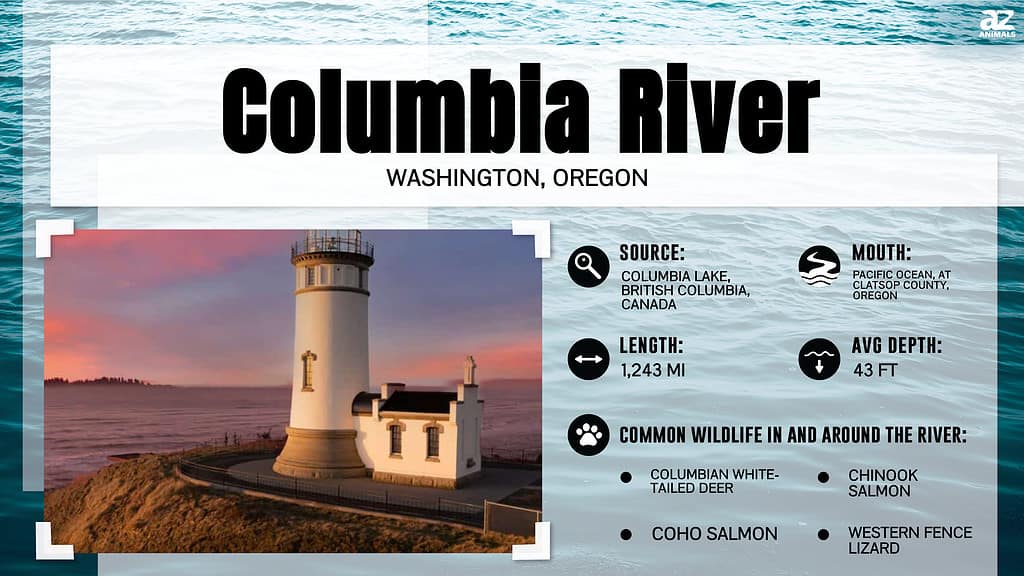
History
The Columbia River region was home to various Native American tribes for a number of centuries. The initial Europeans to see the river’s mouth were possibly Spanish explorers who were cruising along the Pacific coast around 1775. In 1792, Boston trader Robert Gray traveled up the Columbia, giving the river the same name as Gray’s ship.
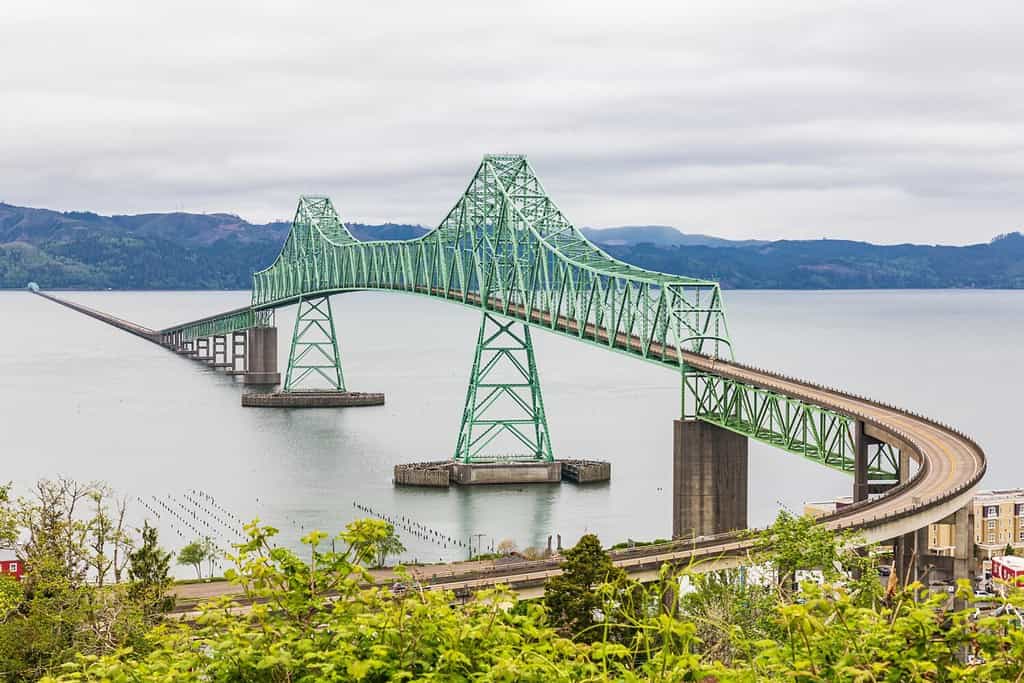
This bridge is near Fort Astoria, located in Astoria, OR.
©Danita Delimont/Shutterstock.com
In the early 1800s, the historic American Lewis and Clark Expedition spent the winter months at the mouth of the Columbia River. Then, in 1811, English geographer David Thompson traversed the majority of the river. Thomspon did so for the North West Company. But when he arrived at the mouth, he discovered that the Americans had already begun construction of Fort Astoria.
In 1882, a railroad was finished running from Portland to Walla Walla, WA. Another one later ran from St. Paul, MN to Portland before continuing on to Tacoma. The first cannery on this river opened its doors in 1866. By the early 1880s, dozens of canneries along the river were providing world markets, particularly Great Britain, with salmon collected in netting, traps, and wagon wheels.
Activities
If you’re looking for somewhere to spend time in the great outdoors, look no further than the Columbia River. There are endless activities and just about everyone is bound to find something they enjoy. Let’s take a look at some of the fun things you can do!
Hiking
The most common places to hike along the Columbia River are near the gorge. In fact, there are over 12 trails to choose from! Because the gorge is located in the Pacific Northwest, it’s important to remember that the terrain can be wet and muddy.
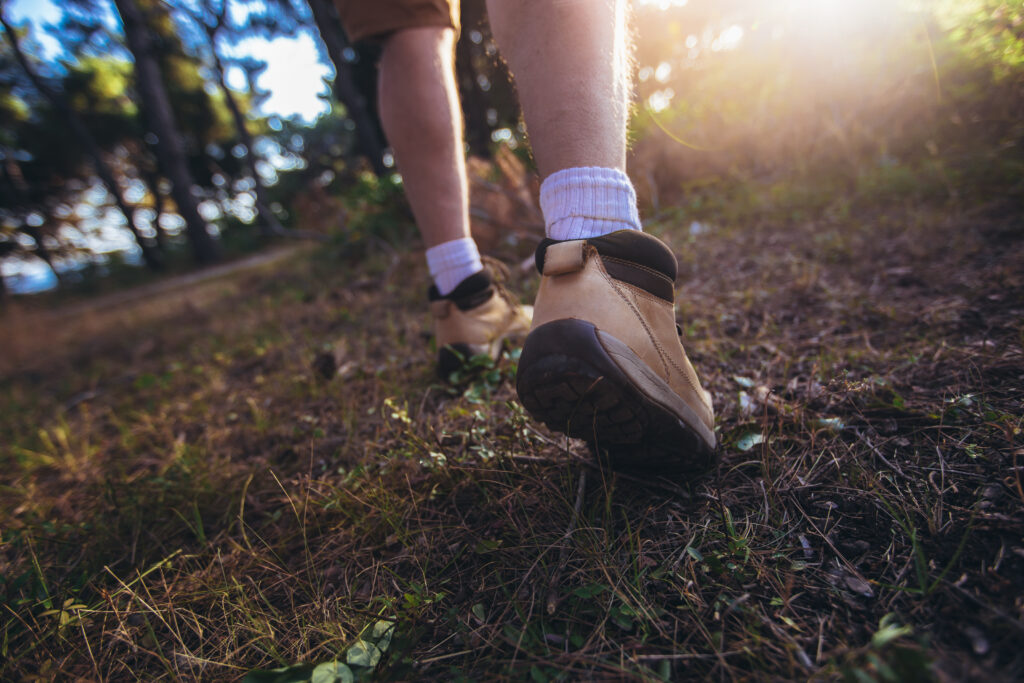
Wearing the right hiking boots can give you traction in wet terrain.
©adriaticfoto/Shutterstock.com
Latourell Falls is one of the most well-liked walks in the Columbia Gorge since it is the nearest waterfall to Portland. This waterfall’s magnificent 220-foot drop is breathtaking. Punch Bowl Falls is an appropriately titled legendary Oregon waterfall that is well worth exploring.
It is situated about two miles into the challenging Eagle Creek Trail in the Columbia River Gorge. For those who enjoy difficult hikes, the entire Eagle Creek Trail is a well-liked Columbia Gorge hiking trail.
Last but not least, the climb to Elowah Falls is regarded as one of the Columbia Gorge’s most beautiful and straightforward hikes. Elowah Falls, which is listed as being 213 feet high, is one of the Gorge’s tallest waterfalls and a good enough reason to go there.
Kayaking
Are you not a fan of hiking? Who can blame you? It takes a lot of work. If you’re looking for an active option that won’t leave you icing your muscles for days, consider kayaking on the Columbia River.
The 146-mile Lower Columbia River Water Trail, which runs from the Bonneville Dam to the Pacific Ocean, is accessible to paddlers of all skill levels. The course is undervalued for canoers and kayakers.
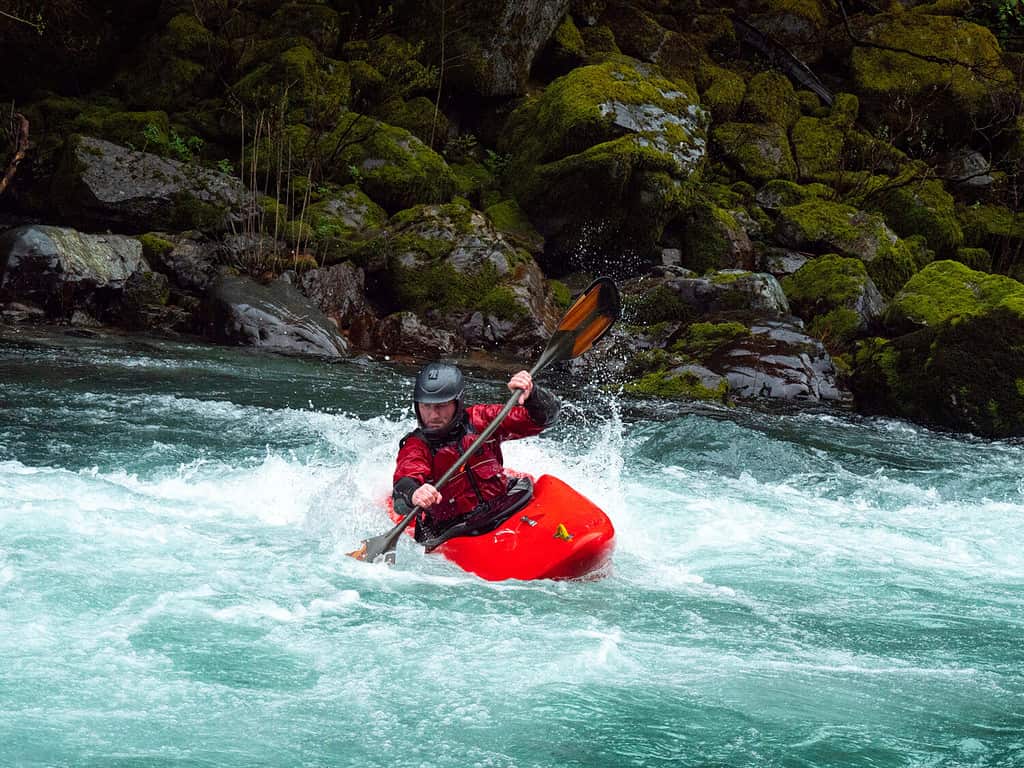
Many people opt for the Columbia River due to the white water paddling opportunities.
©Ahturner/Shutterstock.com
If you don’t have your own equipment, don’t worry! There are plenty of rental stations along the river. They have everything you need to enjoy an afternoon out on the water. Do you want a guide to go with you on your excursion?
You can hire a guide to join you! Develop your kayaking skills while exploring the majestic Columbia River estuary’s basalt cliffs, Sitka spruce wetlands, and tidal marshlands with knowledgeable guides.
Multnomah Falls
Are you looking for a picturesque area that will practically leave you breathless? The jaw-dropping Multnomah Falls is a must when visiting the Columbia River near Portland. The most popular recreational destination in the Pacific Northwest is Multnomah Falls.
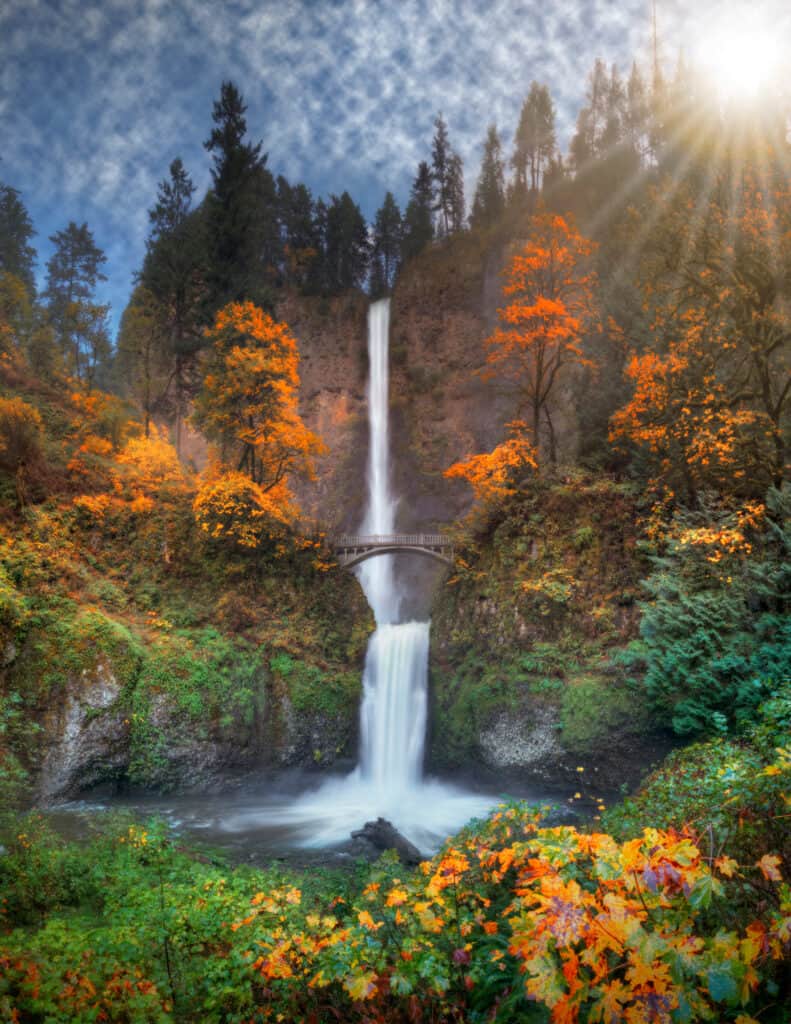
One of the tallest in the nation, this flowing cascade is particularly magnificent in the fall when it is surrounded by rich auburn foliage.
©iStock.com/Freebilly
It plunges in two large steps with the upper portion of the waterfalls dropping 542 feet. The lower portion drops 69 feet. The waterfall is 620 feet tall overall due to the slow drop between the two sectionsThe Multnomah Falls Lodge, which has an eatery and a gift store, is located at the foot of the falls. I-84 and the famed Columbia River Highway both lead to the waterfalls.
Camping
After a day of hiking or exploring the river in a kayak, you’ll want to relax. Nothing beats sitting around a campfire with your loved ones. Pitch a tent and unplug from your busy life by camping along the Columbia River.
There are dozens of spots to go camping here. Whether you’re looking for a spot for the entire family or a secluded place to get some peace, you’re bound to find something along the Columbia River.
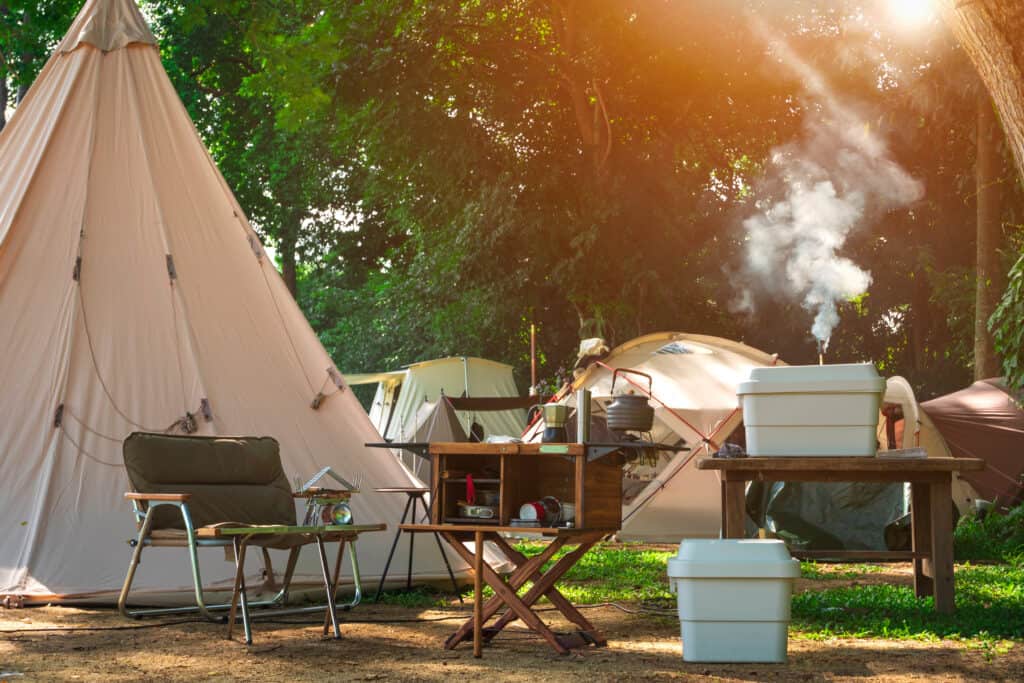
There are all types of camping along the Columbia River.
©Prapat Aowsakorn/Shutterstock.com
Ainsworth State Park, which is accessible from March to October, is a fantastic choice for camping along the Columbia River Gorge. The 45 campsites are roomy and equipped with hookups for electricity, water, and sewer. Clean, hot showers, flush toilets, and potable water for drinking are provided as amenities.
Columbia Riverfront RV Park is a secluded RV park with campsites that back up to the Columbia River and is only a few miles outside of Woodland, Washington. Each of the sites is equipped with water, electricity, and sewer. The park has plenty of room between sites and is suited to big rigs. It’s a fantastic place to see river activity.
Windsurfing
Along with its breathtaking scenery, the Columbia River Gorge’s eastern section is renowned for its ideal windsurfing conditions. From spring blossoms to fishing, there is much for nature enthusiasts to enjoy.
Whenever the winds are directly in the Columbia River near Hood River, you’re able to windsurf and kiteboard. Take a break at one of Hood River’s breweries after a thrilling day on the water.
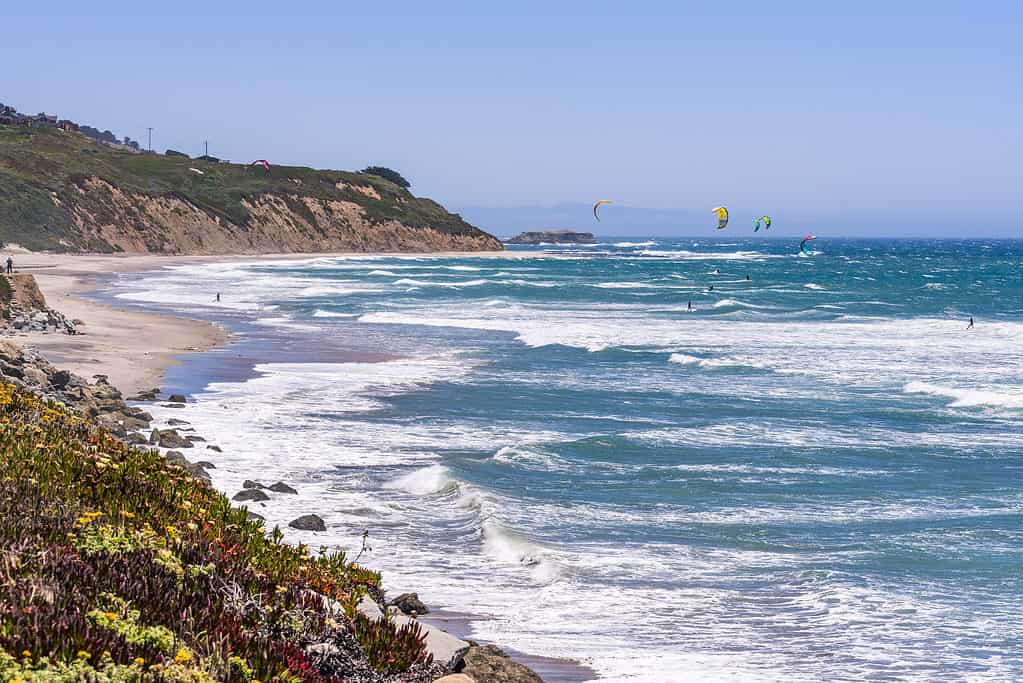
It’s hard to beat the fresh air on your face during an afternoon of windsurfing.
©iStock.com/Sundry Photography
Bonneville Dam Visitors Center
On the Oregon side of the river, there is a visitor center called the Bonneville Dam Visitor Venter that has exhibits and a viewing platform. To find out more about the significance of the dam, take a narrated powerhouse tour or see a movie in the visitor center theater.
The recreation area also offers picnicking, access to the river, and nature paths. There’s an underwater viewing chamber that gives visitors of all ages a look at the fish that call the Columbia River home.
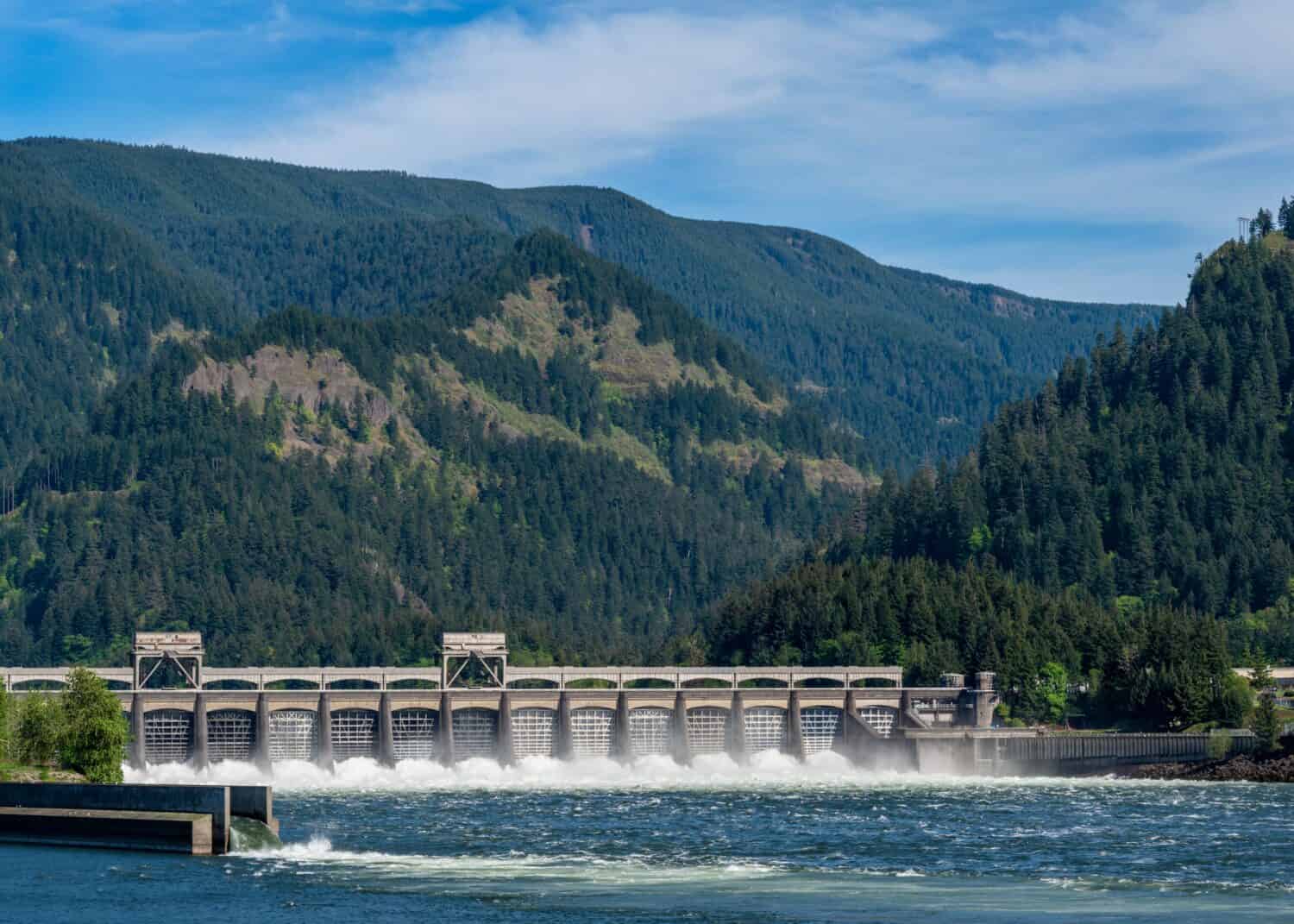
The Bonneville Dam is just 40 minutes from Portland.
©J-B-C/Shutterstock.com
Size
The distance along this river from its source to its mouth in the Pacific Ocean is roughly 1,243 miles. The origin of the river is 2,690 feet above sea level in British Columbia’s Columbia Lake.
It is the biggest river in North America that empties into the Pacific. Among the 135 U.S. rivers that are longer than 100 miles, it takes the seventh seat. Around 265,000 cubic feet of water flow per second through the mouth on average.
Talk about a strong current! The Columbia River is the fourth-biggest river in the United States by volume. Amazingly, the drainage basin of the Columbia River is the same size as France.
It has lakes and streams spread throughout 258,000 square miles. Additionally, the rapid river powers 14 hydroelectric dams.
Depth
At the end of the last ice age, the Glacial Lake Missoula’s ice dams burst. This caused a rapid increase in water to the Columbia River. The Bonneville Dam’s water depth was predicted to be 830 feet. Meanwhile, the Wallula Gap’s water level was expected to be 1250 feet.
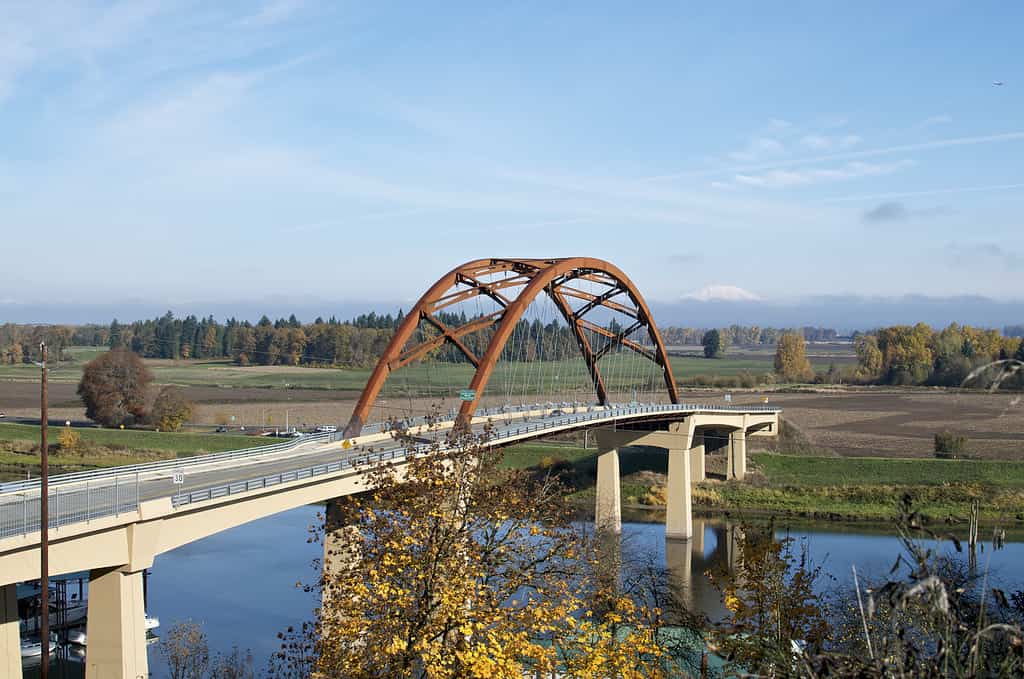
Sauvie Island Bridge crosses the Multnomah Channel. The island has the Columbia River to the east, the Multnomah Channel to the west, and the Willamette River to the south.
©iStock.com/GarysFRP
Lastly, the depth of the river in Portland was believed to be 400 feet. When the cold months arrive in autumn, the flow of the river begins to lessen, thus causing less depth. Because the Columbia River is part of a hydroelectric plant, fall and winter can cause water shortages. Once the snow melts in springtime, water levels pick up again
Fish
The salmon and steelhead migrations in the Columbia River are well-known. You’ll find over a million Chinook, coho, and sockeye salmon as well as summer steelhead here. They migrate up the river to reproduce in its tributaries for years that have substantial outcomes.
The exceptional smallmouth bass and walleye fishing in the river are less well recognized. Although many fishermen fish in this big river from a vessel, there are numerous parks, boat launches, and beaches that offer adequate bank access.
Walleye
On the Columbia River, walleye fishing is possible virtually all year long, but a lot of fishermen decide not to risk the bitterly cold weather and howling winds during the harshest winter months. In the canyon, where the finest fishing starts in May, there are a few of the most well-known fisheries. The site may be less active during the hot summer months but peaks in October.
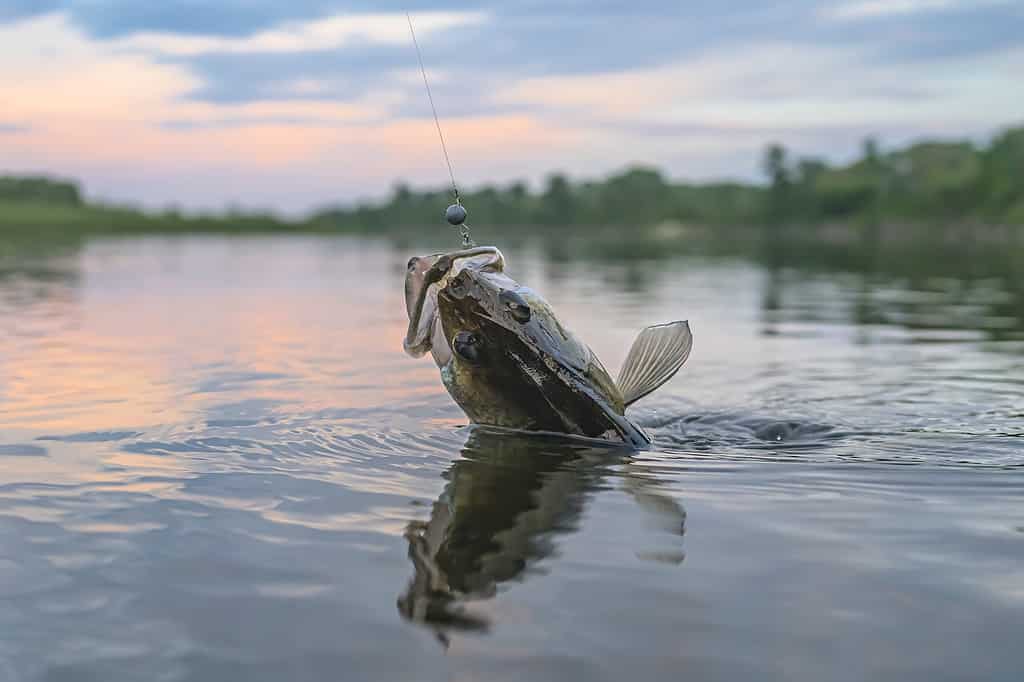
Walleye are among the most popular game fish in North America.
©iStock.com/FedBul
Salmon
If there’s one fish to find in the Columbia River, it’s salmon! These fish may be as tasty to eat as they are to catch for anglers. The summer Chinook season begins on June 15 while the fall Chinook season starts at the beginning of August.
In August, the well-liked Buoy 10 fishing near the river’s mouth attracts a sizable amount of coho salmon along with Chinook.
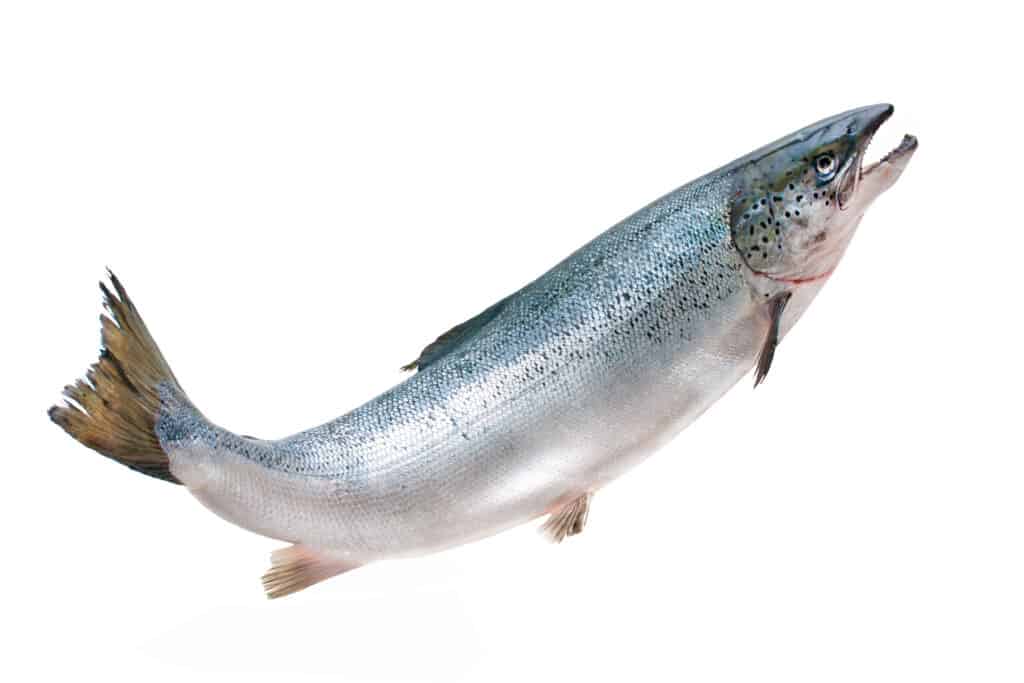
Atlantic salmon develop a silver-blue sheen with black spots above the lateral line when they go to sea to mature.
©Alexander Raths/Shutterstock.com
Smallmouth Bass
Statewide notoriety for outstanding smallmouth bass fishing on the Columbia River has grown. The upper river has hosted professional bass competitions, and amateur anglers can take advantage of the same outstanding fishing from a boat or on the rough shorelines.
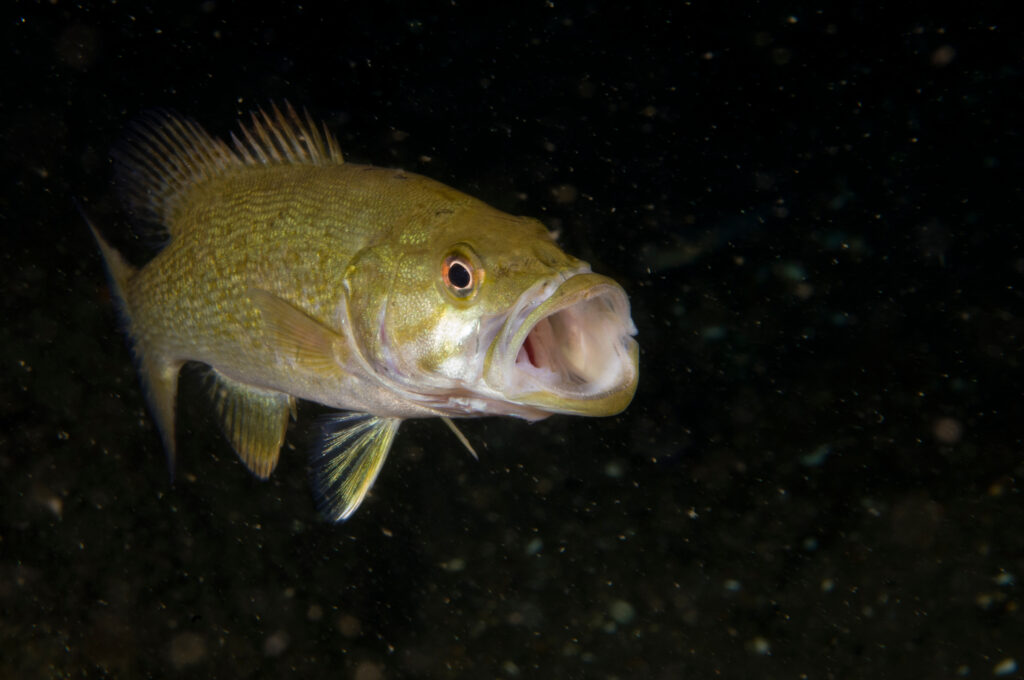
Smallmouth bass are carnivorous fish and can be found in droves in the Columbia River.
©RLS Photo/Shutterstock.com
Sturgeon
These fish haven’t evolved much in the past 175 million years, giving them the moniker “living fossil.” Large fish, like sturgeon, in the Columbia River can grow to a length of up to 12 feet and weigh up to 800 pounds.
Although catch-and-release fishing is the norm for sturgeon below Bonneville Dam, the opportunity to hook and battle one of these bad boys is thrilling. Smaller sturgeons are referred to as “head shakers” because of their fervent reaction are also found in the Columbia River.
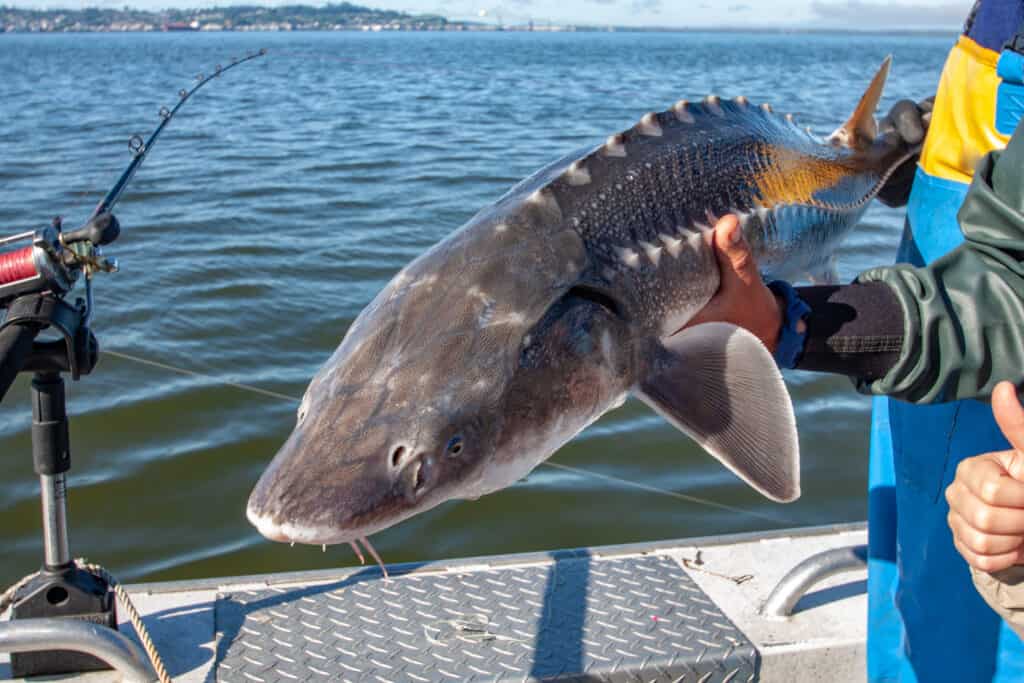
Anglers on the Columbia River practice catch-and-release fishing with sturgeon.
©CSNafzger/Shutterstock.com
Geology
When it comes to the geology of the Columbia River, one thing stands out. According to the official website the Columbia River Gorge is, “A world-class landscape that extends more than 100 miles east of Portland, where the Columbia River carves a dramatic canyon between the states of Oregon and Washington.”
The Gorge is one of only ten National Scenic Areas in the US and offers winding pathways that lead to picturesque landscapes, old-growth forests, expansive views, and misty waterfalls. When pressure from molten lava drove up granite to form the Columbia Basin, the Gorge’s creation started 40 to 60 million years ago.
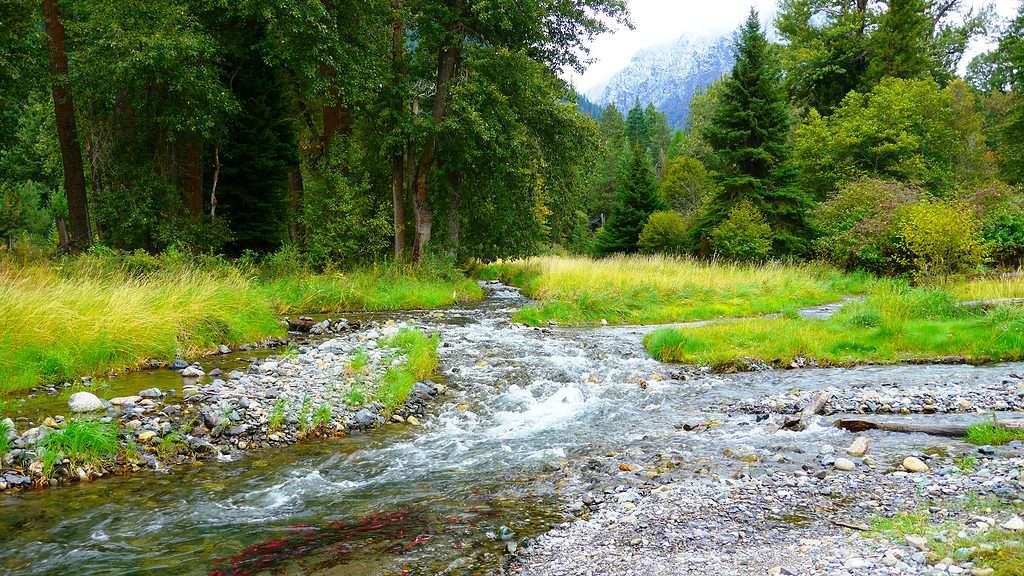
The name of the river comes from the Nez Perce tribe, who made their home on the Columbia River Gorge about 12,000 years ago.
©Rick Obst from Eugene, United States, CC BY 2.0, via Wikimedia Commons – License
Massive volcanoes erupted approximately six and 17 million years ago, spewing more than 20 enormous flows of basalt into the region that is now the Gorge. The Columbia River Gorge is known for its famous canyon and shimmering river, but it also has unique habitats, wildlife, and scenery.
Throughout this stretch of earth, a variety of ecosystems and microhabitats can be found. These range from humid rainforests in the west to desert plains in the east. Riparian habitats and marshes change into mountainous crags and fields as the terrain ascends from the river to the high peaks.
The photo featured at the top of this post is © iStock.com/vitpho
Thank you for reading! Have some feedback for us? Contact the AZ Animals editorial team.



